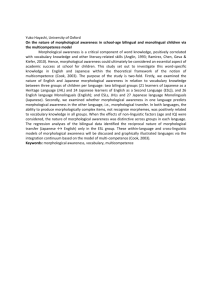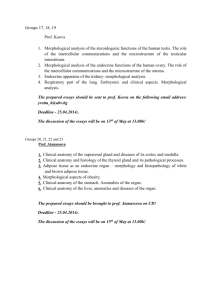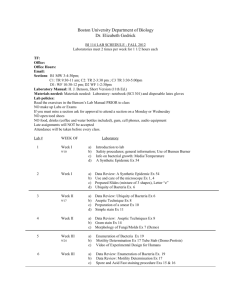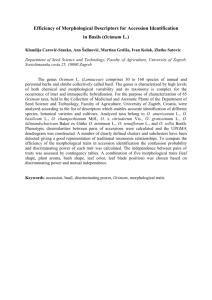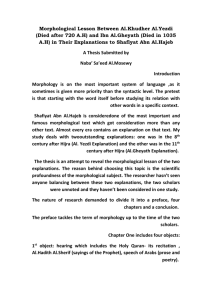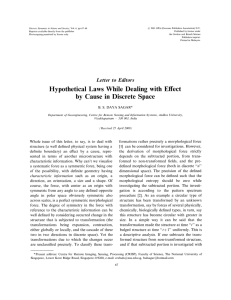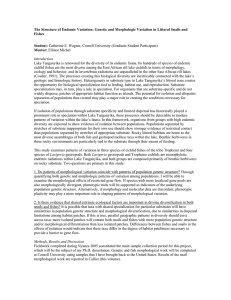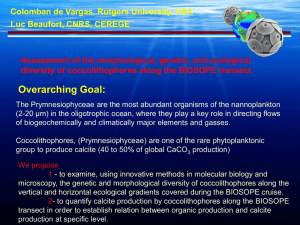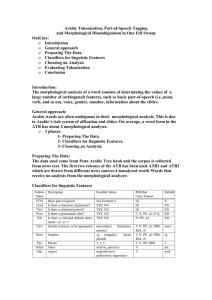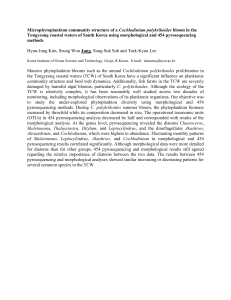Comparing morphological diversity with genetic structuring in the
advertisement
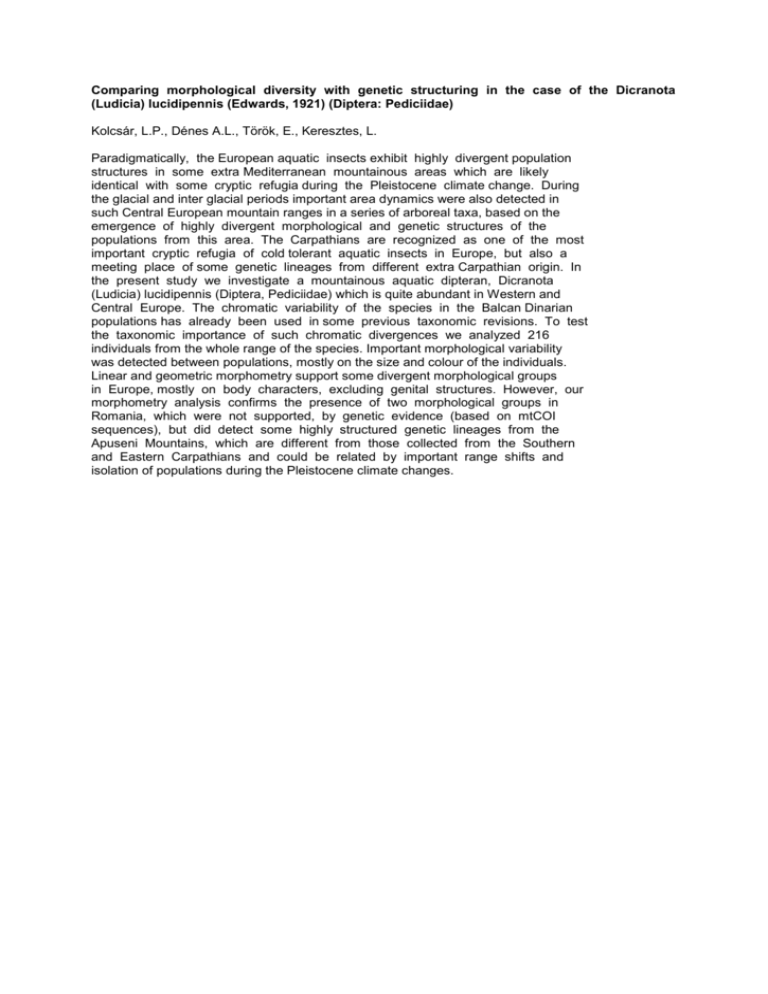
Comparing morphological diversity with genetic structuring in the case of the Dicranota (Ludicia) lucidipennis (Edwards, 1921) (Diptera: Pediciidae) Kolcsár, L.P., Dénes A.L., Török, E., Keresztes, L. Paradigmatically, the European aquatic insects exhibit highly divergent population structures in some extra Mediterranean mountainous areas which are likely identical with some cryptic refugia during the Pleistocene climate change. During the glacial and inter glacial periods important area dynamics were also detected in such Central European mountain ranges in a series of arboreal taxa, based on the emergence of highly divergent morphological and genetic structures of the populations from this area. The Carpathians are recognized as one of the most important cryptic refugia of cold tolerant aquatic insects in Europe, but also a meeting place of some genetic lineages from different extra Carpathian origin. In the present study we investigate a mountainous aquatic dipteran, Dicranota (Ludicia) lucidipennis (Diptera, Pediciidae) which is quite abundant in Western and Central Europe. The chromatic variability of the species in the Balcan Dinarian populations has already been used in some previous taxonomic revisions. To test the taxonomic importance of such chromatic divergences we analyzed 216 individuals from the whole range of the species. Important morphological variability was detected between populations, mostly on the size and colour of the individuals. Linear and geometric morphometry support some divergent morphological groups in Europe, mostly on body characters, excluding genital structures. However, our morphometry analysis confirms the presence of two morphological groups in Romania, which were not supported, by genetic evidence (based on mtCOI sequences), but did detect some highly structured genetic lineages from the Apuseni Mountains, which are different from those collected from the Southern and Eastern Carpathians and could be related by important range shifts and isolation of populations during the Pleistocene climate changes.








